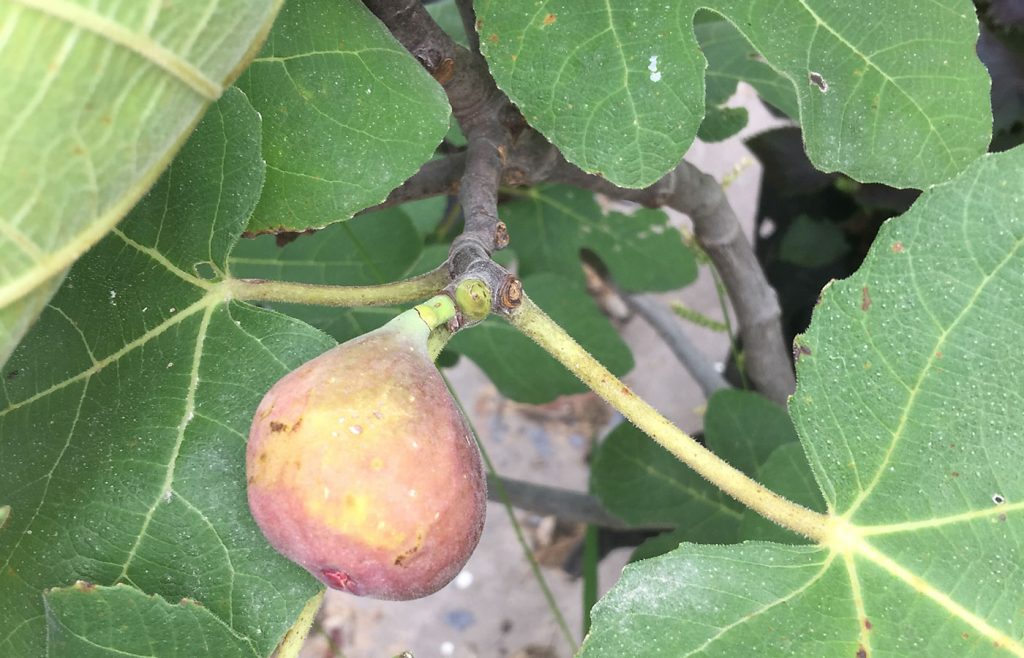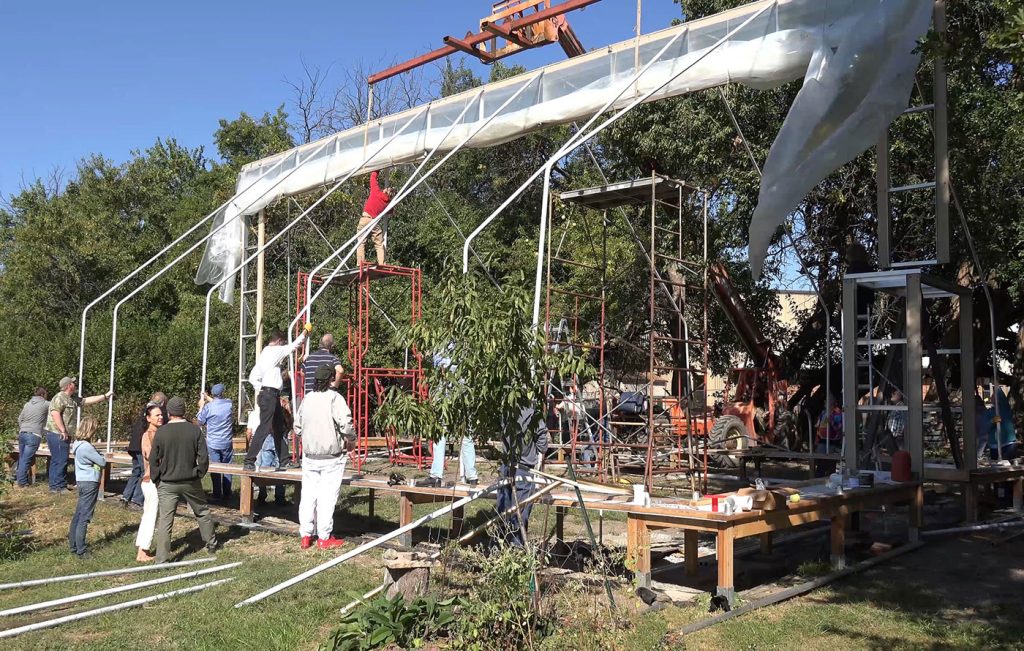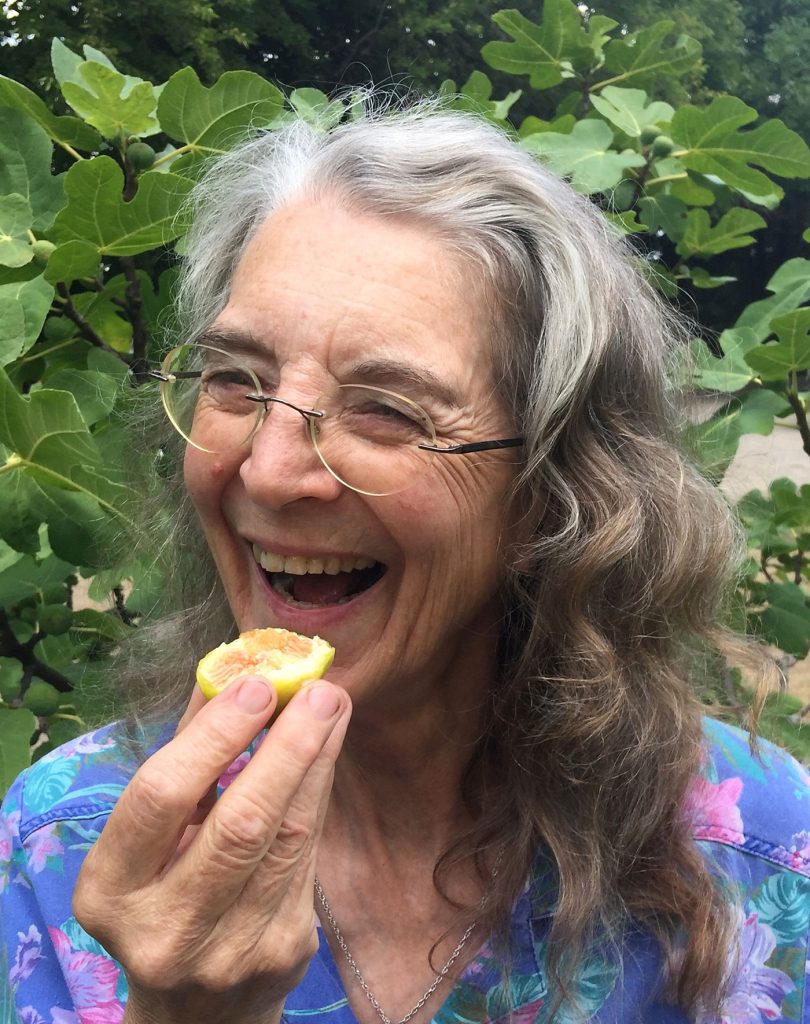
Colleen Bell fell in love with fresh figs a couple decades ago. After reading about a gardener in Maine who grew figs in pots, she thought, “If he can do it, I can do it.”
Figs are native to the Mediterranean area and need a long, warm growing season. In the U.S. they’re most commonly grown in Southern states like California and Texas. But hardier varieties have emerged that will grow in colder climates—including Iowa’s.
Bell has been growing figs for 13 years in Fairfield. A lifetime gardener and permaculture design graduate, she started out with a few potted fig trees. Once they started producing fruit, she was hooked. Bell learned how to propagate them from cuttings and got invaluable assistance from fig forums like figs4fun.com and ourfigs.com.

She now has almost 40 trees, all in pots, from 1 to 13 years old. She grows a number of varieties, primarily the frost-hardy Chicago Hardy Fig. They still need protection from the extreme cold to produce much of a crop, so when the weather turns frosty, she shleps them to her garage or basement and then hauls them back outside in the spring. But that’s about to change.
Colleen and her husband, Kerry, are currently building an extra-tall, partly insulated, high-tunnel greenhouse that will extend their fruiting season dramatically. The trees can grow in the ground and still receive protection from extreme weather. Figs need to avoid freezing to remain productive, but the temperatures have to remain cool enough to induce a dormant period. With this design, the dormant period can be reduced from 6 months to 6 weeks, allowing for a longer growing season.
Once fig trees are established, it only takes two to three years for them to produce fruit. These trees have two harvests, one in the spring and a second, longer harvest in the fall. A warm and happy fig tree can produce from July to Thanksgiving. Bell says her older potted fig trees produce around 200 figs each, and she expects to double or triple that amount once trees are planted in the greenhouse.
More Than Just Fruit
Bell was initially drawn to figs while researching live food. “Figs nutritionally are one of the few sweet fruits that are still alkalizing as your body metabolizes them. And figs are good for brain and gut health.”
One of the oldest plant species on earth, figs were one of the first plants to be cultivated by humans. Figs themselves, apart from being sweetly delicious, are an excellent source of fiber, prebiotics, vitamins, and minerals.
Revered in many cultures and religions, fig fruits, leaves, roots, and bark all have medicinal and culinary uses. Fig leaves have antibacterial and antimicrobial properties, and ancient Ayurvedic texts detail a number of medicinal uses for figs. Modern Nepalese use the bark, leaves, and roots of Ficus benghalensis to treat over 20 disorders.
Readying the Greenhouse
As is often the case when undertaking a project that hasn’t been done before, constructing the special 19-foot-high greenhouse has been fraught with challenges—mainly that it’s taking longer and costing more than anticipated. Bell initially accepted a bid from a contractor who didn’t understand Iowa weather, and the greenhouse was damaged by wind.

“We were disheartened,” she says, “but we salvaged the mess and redesigned it.” She hired Rolling Acres Greenhouse Supplies, an excellent Amish company, to rebuild it. She and her husband are working hard to finish up this fall.
“The process of building this dream-high tunnel has been a journey in self-development,” she says. “Our community came out to help all along the way, with as many as 30 people showing up at a time to help with construction.”
Enjoying the Fruit
In early September, Bell brought over 200 figs to the Fairfield Farmers Market and gave them away so as many people as possible could taste a fresh fig, right off the tree. “Many had never tasted a fresh fig before in their lives!” she says.
Bell is extremely grateful for the huge outpouring of community support. And she recently received an EQIP (Environmental Quality Incentives Program) grant that covered a small part of the construction costs. But more needs to be done. “It’s an ongoing process!” she says. The Bells continue to host work parties to get the greenhouse enclosed for the winter. Then the work begins inside, where their labor of love will begin to bear fruit.
If you’d like to support this project to bring fresh, locally grown figs to Iowa, go to GoFundME.com/FairfieldFigs, email FairfieldFigFarm@gmail.com, or call (641) 472-7010.
